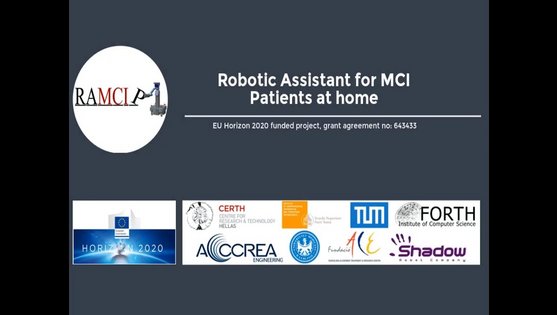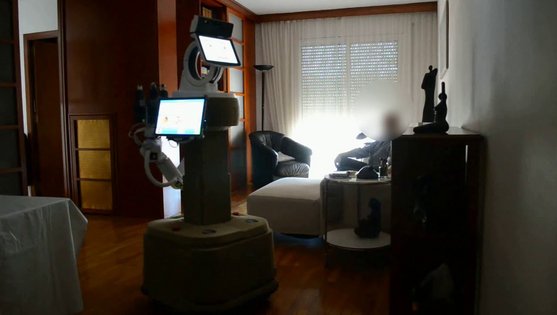- Robotic Assistance in Medication Intake: A Complete Pipeline. Applied Sciences 12 (3), 2022 mehr… BibTeX
- Computationally Efficient Rigid-body Gaussian Process for Motion Dynamics. IEEE Robotics and Automation Letters (RA-L), 2017, 1601 - 1608 mehr… BibTeX
- Dynamically Consistent Online Adaptation of Fast Motions for Robotic Manipulators. IEEE Transactions on Robotics (T-RO) 34 (1), 2017, 166-182 mehr… BibTeX
- Augmented Invariance Control for Impedance-controlled Robots with Safety Margins. IFAC World Congress , 2017 mehr… BibTeX
- Impedance-based Gaussian Processes for Predicting Human Behavior during Physical Interaction. International Conference on Robotics and Automation 2016, 2016 mehr… BibTeX
- Augmented Invariance Control for Systems with Smoothness Constraints. Proceedings of the 55th Conference on Decision and Control (CDC), 2016 mehr… BibTeX
- Synchrony and Reciprocity: Key Mechanisms for Social Companion. Int. Journal of Social Robotics, 2015 mehr… BibTeX
- Spatial adaption of robot trajectories based on Laplacian Trajectory Editing. Autonomous Robots, 2015 mehr… BibTeX
RAMCIP: Robotic Assistant for Mild Cognitive Impairment Patients at home

Ambient robotic technologies are considered to play a major role in assisting elderly people to independently lead a good quality of life. The RAMCIP project was launched to develop a robotic solutions for holistically assisting elderly people, in particular with Mild Cognitive Impairment (MCI) or an early stage Alzheimer's disease during activities of daily living in home environments. The RAMCIP envisages future service robots for safe and user-centric assisted living environments, supporting a range of activities such as food preparation, dressing activities, and keeping the home environment safe for the user. Furthermore, the RAMCIP robot will be designed to promote cognitive and physical well-beings of the end-users by adaptively modulating its assistive skills to help them engage in daily activities at their full potential.
Structure
The RAMCIP project holistically addresses assistive technologies from cognitive, affective and physical perspectives using an robotic platform. Cognitive functions based on advanced modelling and monitoring of the user and home allows the robot to decide when and how an assist is required, and whether it should act autonomously or in cooperation with the user. Adaptive multimodal human-robot communication interfaces, integrates empathic communication methods within the augmented reality displays. Advanced dextrous robotic manipulation capabilities enables grasping and manipulation of a wide variety of home objects, as well as assistance activities that involve physical contact, with special emphasis on safety of vulnerable individuals in the home environments.
TUM Contribution
The primary contribution of TUM is the development and implementation of novel control schemes for safe and robust physical task execution of the RAMCIP robot within dynamics home environments as well as in cooperation with motion of human users. TUM also contributes to developing a cognitive architecture which frames these control schemes which will be integrated into the RAMCIP system.
Horizon 2020 Research and Innovation Action
Project title: RAMCIP-Robotic Assistant for Mild Cognitive Impairment Patients at home
Project number: 643433
Call (part) identifier: H2020-PHC-19-2014
Project period: Jan 2015 - Dec 2017
The Consortium is composed of:
- Centre for Research and Technology Hellas (CERTH, Greece)
- Technische Universität München (TUM, Germany)
- Scuola Superiore di studi universitari e di perfezionamento Sant’Anna (SSSA, Italy)
- Foundation for Research and Technology Hellas (FORTH, Greece)
- ACCREA (ACCREA, Poland)
- Uniwersytet Medyczny w Lublinie (LUM, Poland)
- FundacioACE (ACE, Spain)
- The Shadow Robot Company Limited (SHADOW, UK)


